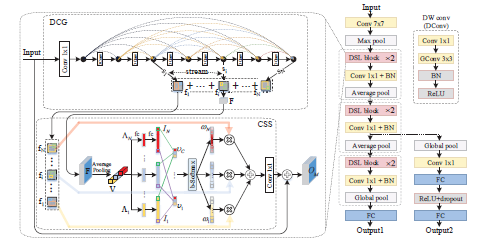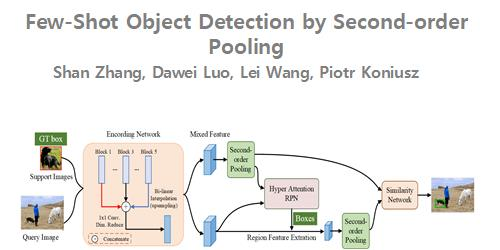Learning More Accurate Features for Semantic Segmentation in CycleNet
Linzi Qu (Xidian University)*, Lihuo He (Xidian University), JunJie Ke (Xidian University), Xinbo Gao (Xidian University), Wen Lu (Xidian University)
Keywords: Segmentation and Grouping
Abstract:
Contextual information is essential for computer vision tasks, especially semantic segmentation. Previous works generally focus on how to collect contextual information by enlarging the size of receptive field, such as PSPNet, DenseASPP. In contrast to previous works, this paper proposes a new network -- CycleNet, which considers assigning a more accurate representative for every pixel. It consists of two modules, Cycle Atrous Spatial Pyramid Pooling (CycleASPP) and Alignment with Deformable Convolution (ADC). The former realizes dense connections between a series of atrous convolution layers with different dilation rates. Not only the forward connections can aggregate more contextual information, but also the backward connections can pay more attention to important information by transferring high-level features to low-level layers. Besides, ADC generates accurate information during the decoding process. It draws support from deformable convolution to select and recombine features from different blocks, thus improving the misalignment issues caused by simple interpolation. A set of experiments have been conducted on Cityscapes and ADE20K to demonstrate the effectiveness of CycleNet. In particular, our model achieved 46.14% mIoU on ADE20K validation set.
SlidesLive
Similar Papers
Dense-Scale Feature Learning in Person Re-Identification
Li Wang (Inspur), Baoyu Fan (Inspur Electronic Information Industry Co.,Ltd.)*, Zhenhua Guo (Inspur Electronic Information Industry Co.,Ltd.), Yaqian Zhao (Inspur), Runze Zhang (Inspur Electronic Information Industry Co.,Ltd.), Rengang Li (Inspur), Weifeng Gong ( Inspur Electronic Information Industry Co.,Ltd.)

Few-Shot Object Detection by Second-order Pooling
Shan Zhang (ANU, Beijing Union University)*, Dawei Luo (Beijing Key Laboratory of Information Service Engineering, Beijing Union University ), Lei Wang ("University of Wollongong, Australia"), Piotr Koniusz (Data61/CSIRO, ANU)

Best Buddies Registration for Point Clouds
Amnon Drory (Tel-Aviv University)*, Tal Shomer (Tel-Aviv University), Shai Avidan (Tel Aviv University), Raja Giryes (Tel Aviv University)
